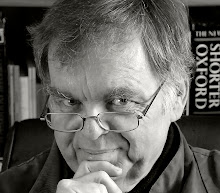The very first camera I ever owned - full stop - was a Kodak Instamatic 200. It was one of nearly 60 million such cameras sold world-wide by the Kodak camera company between about 1963 and 1970. It was perhaps the last great hurrah for American camera manufacture and marketing before the Japanese industry effectively took over the world.
The first Instamatic to make an impact in Australia was the model 100 (pictured above) which was actually manufactured here. Philosphically it was a direct descendent of the Box Brownie series which had brought photography to the masses at the turn of the twentieth century. It was a genuine inspiration and consisted of a pretty little box which opened at the back to allow a brilliantly conceived film "cartridge" to be dropped in. It was incredibly simple to operate, offered a wide angle lens which had so much depth of field that focussing was unnecessary, a simple shutter release and a film advance lever. Provided that the conditions were bright and assuming that your shaky hands could live with a 1/90 sec fixed shutter speed, the average person could get an acceptable colour picture every time. Thus uncounted millions of sunny day family "line ups" at back yard picnics were committed to film.
 For those who might actually take a picture in other than sunny circumstances or who might want to get a little closer to their subjects, my Instamatic 200 was a surprisingly important step up. It was manufactured exclusively in England and was possibly the best thought out non-exposure metered super cheap camera ever made. It provided four basic aperture settings which covered most circumstances: bright sunshine, low sun (early morning & late afternoon), light overcast and dark. It had four broad focus zones from close up to infinity and a slightly longer (and more flexible) lens.
For those who might actually take a picture in other than sunny circumstances or who might want to get a little closer to their subjects, my Instamatic 200 was a surprisingly important step up. It was manufactured exclusively in England and was possibly the best thought out non-exposure metered super cheap camera ever made. It provided four basic aperture settings which covered most circumstances: bright sunshine, low sun (early morning & late afternoon), light overcast and dark. It had four broad focus zones from close up to infinity and a slightly longer (and more flexible) lens.Looking at some of my earliest slides, I can see that the old Instamatic did a creditable job, but when I used to compare them with the slides of a very dear friend of mine (who owned a proper 35mm camera with a really good lens) I quickly became dissatisfied. The rest is largely a sad history of frustration, expense and just plain foolishness during which I thrashed around looking for the perfect camera and lenses which would make of me the perfect photographer.
Some years ago it dawned upon me that I would NEVER become the "perfect" photographer. If I was ever to make money in photography I would need to learn to become a "good enough" photographer. Moreover, being good enough (beyond a certain point) had little to do with equipment, perfect or otherwise.
See my work at: www.pbase.com/davidhobbs


No comments:
Post a Comment